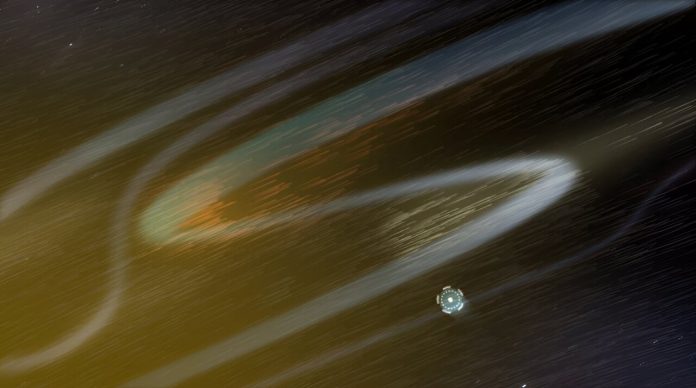
Scientists have long been puzzled by the sun’s corona, the outermost part of the sun’s atmosphere, which is incredibly hot—up to 200 times hotter than the sun’s surface.
This seems to defy logic since the corona is farther from the sun’s core, the source of its heat.
Understanding why the corona is so hot is important because it helps explain how the sun’s charged particles, known as plasma, move fast enough to escape the sun’s gravity and create the solar wind that affects our entire solar system.
To get to the bottom of this mystery, NASA launched the Parker Solar Probe. This spacecraft is designed to fly close to the sun and gather information directly from the corona.
It has instruments on board that can measure the density, temperature, and flow of the plasma in the corona.
These instruments were developed by Justin Kasper, a professor at the University of Michigan, specifically for this mission.
When the Parker Solar Probe first approached the sun, it detected something interesting—S-shaped bends in the sun’s magnetic field. These bends, called switchbacks, briefly reverse the direction of the magnetic field and store a lot of energy.
Scientists thought that as these switchbacks moved through space and straightened out, they might release their stored energy into the surrounding plasma, potentially heating the corona.
Mojtaba Akhavan-Tafti, a scientist from the University of Michigan who led a study on this topic, explained that if these switchbacks were heating the corona, they would need to be present inside the corona itself.
However, after analyzing data from the Parker Solar Probe’s first 14 orbits around the sun, the research team found that while switchbacks are common in the solar wind near the sun, they are not found inside the corona.
This discovery suggests that the switchbacks are not formed by magnetic field collisions at the sun’s surface, as some scientists had previously thought. If they were, the switchbacks would be more common inside the corona. This finding rules out one possible explanation for why the corona is so hot.
Even though this hypothesis was ruled out, Akhavan-Tafti believes that magnetic collisions on the sun’s surface might still play an indirect role in forming switchbacks and heating the corona. When magnetic fields collide on the sun’s surface, they send out waves like a plucked guitar string.
These waves could distort into switchbacks as they move through the solar wind and might also contribute to heating the corona.
There is still much to learn about what causes switchbacks and how they might be linked to the corona’s extreme temperatures. More data from the Parker Solar Probe’s upcoming missions, including a close approach in December 2024, will help scientists test these ideas further.
In short, the Parker Solar Probe has ruled out one theory about the sun’s mysterious corona but has opened the door to new possibilities. As the probe gets closer to the sun, scientists hope to uncover more answers about this puzzling phenomenon.



